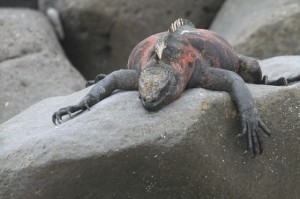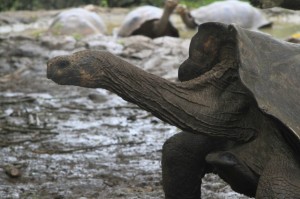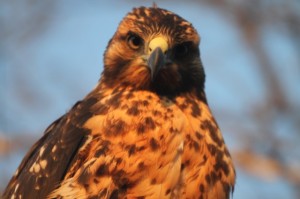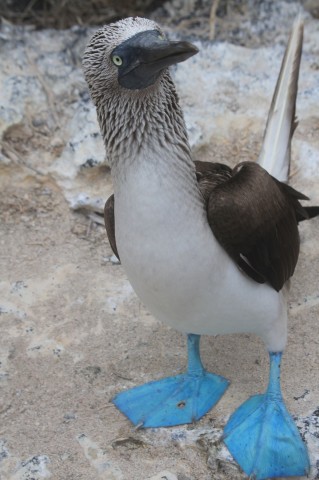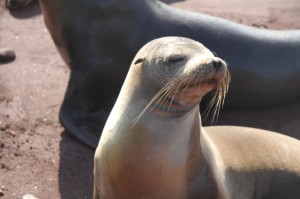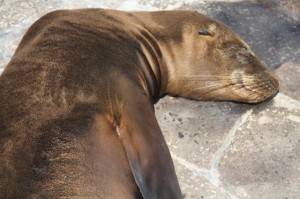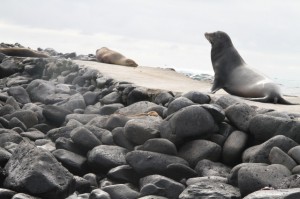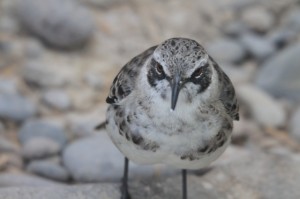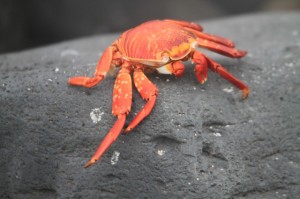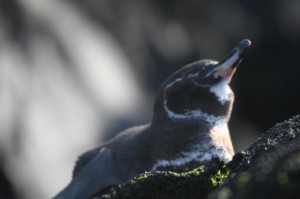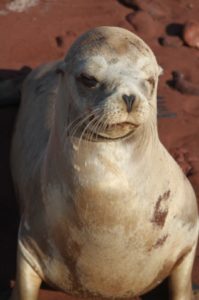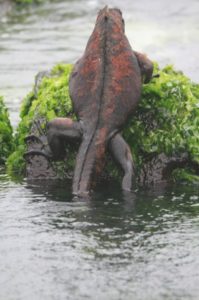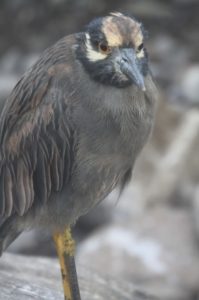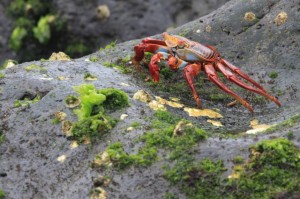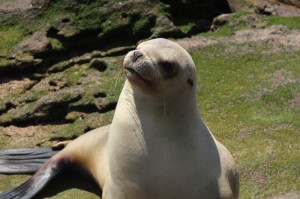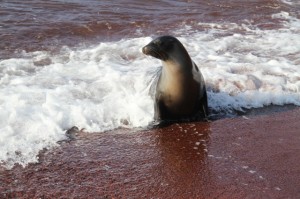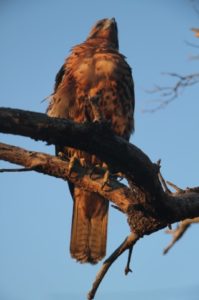 I wouldn’t call myself a naturalist and while I subscribe to eco-friendly living, I work in the technology industry where people over-consume and over-produce. I’m surrounded by venture capitalists and entrepreneurs who have private jets, several cars and might opt to fly to Tokyo for a 24 hour meeting. That said, northern California has spearheaded a number of important green initiatives and tries really hard. Even so, it ‘ain’t no Costa Rica, New Zealand or Ecuador,’ home to the Galapagos Islands, world renown for its natural beauty, lush vegetation and unique birds and species.
I wouldn’t call myself a naturalist and while I subscribe to eco-friendly living, I work in the technology industry where people over-consume and over-produce. I’m surrounded by venture capitalists and entrepreneurs who have private jets, several cars and might opt to fly to Tokyo for a 24 hour meeting. That said, northern California has spearheaded a number of important green initiatives and tries really hard. Even so, it ‘ain’t no Costa Rica, New Zealand or Ecuador,’ home to the Galapagos Islands, world renown for its natural beauty, lush vegetation and unique birds and species.
Whether or not you’re “into nature” or an animal lover, you can’t go to the Galapagos Islands and not return untouched or frankly, unchanged by how important our environment is and why it is our environment which must drive our decisions, not business.
Wealthy Americans, Europeans and South Americans tend to be the main visitors to the Islands, mainly because it’s not a cheap ticket to get in. Whether you fly into Santa Cruz, the main island where most of the tours begin, and do day trips by boat each day or whether you sign up for one of the numerous cruise options, your wallet will be hit ten-fold compared to what you’d pay on the mainland. For a mid-range cruise, you can pay from $500-1,000 a day for your lodging (on the boat), three meals a day and your daily naturalist guide.
So much of the Ecuador Andes is getting hit that perhaps the Galapagos Islands remains the only ‘untouched’ and truly safe area where nature and wildlife can live without the fear of business and government corruption interference. Time will tell. For now, it’s a natural wonderland.
Once you hear the sound of the birds and swim with a barking sea lion, there’s no turning back. There are sounds in the Adirondack Mountains I heard as a child I didn’t hear in the same ‘parts’ as an adult. We — our lifestyles, our intention, purposeful or not, IS destroying the environment, one centimeter at a time.
The sounds of the Galapagos Islands are vivid, rich and a reminder that their ecosystem is in balance. There is so much wildlife that regardless of what direction you turn, you’re bound to see another bird or accidentally step on a Marine Iguana – there’s so many of these reptilia black and red creatures with Darth Vader eyes that I nearly stepped on one on more than one occasion. It’s not as if they’re small in size either, but they are well camouflaged and simply fade into the colors of the rocks, whether there’s one or a dozen.
Like the sea lions, they don’t fear humans, so regardless of your proximity (unless there’s a new baby nearby), they tend to move very slowly as if they’re just waking up on an early Sunday morning after a harsh hangover from the previous night. Sea lions are everywhere — and I mean everywhere, lapping on the wet sandy beaches, the rocks and even in the bush to the rear of the beach.
A pup might be lounging alone and as I’d stare at him for several minutes, he would cover himself with sand using his wing, and then nuzzle his head down into the soft dry sand for coverage.
Geared up with mask and fins, I dove under about ten feet of water near the shore, soon to discover a sea lion swimming along side me. He glances my way and I can see his whiskers under the sea, so I dive deeper and another one swims over me, heading towards slightly deeper waters near the rocky cliffs along the shore.
First, we took in the giant tortoises on Santa Cruz, one over two hundred years old – we found a 90 year old tortoise in the act (sex seemed to be rampant on the Islands from the tortoises to the blue-footed boobies and beyond).
Below is an overactive tortoise on San Cristobal in Galapaguera who decided to play with me and the camera. Fearless, I followed him around for several minutes and well, he just posed and posted.
Below, a Galapagos Hawk on Rabida Island, also known as the Red Island. It’s most striking feature is a high bluff on the north coast, which glows a startling red when the sun is low in the sky and contrasts with the green fringe of straggling opuntias along its Summit. The Island is loaded with brown pelicans and blue footed and Nazca Bobbies, who loaf on the sheer walls.
There are also yellow-tailed mullets, who can be found in and out of the water, along the shore. Bottlenose dolphins are commonly found around Rabida, as well as waved albatrosses, swallow-tailed gulls and lava gulls. We were lucky to discover this incredible hawk towards the end of a hike one afternoon, who didn’t move when we arrived. He stuck around for the ride and starred back as we starred at him, shot photos and did our oos and ahhs.
A Galapagos Marine Iguana on Gardner Island across from Espanola,
one of my favorites.
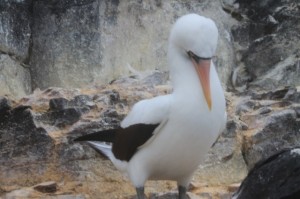
A Blue-Footed Boobie on Espanola Island:

Espanola Mockingbird and Lava Lizard:
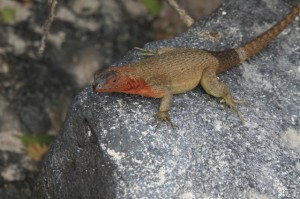
Sayapas Red Crab and Galapagos Dove:
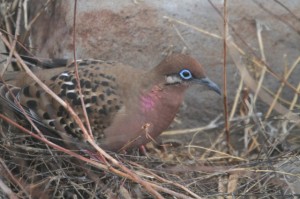
A Galapagos Penguin and a Small Ground Finch:
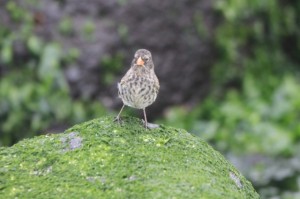
Sea lions everywhere. Literally everywhere – in and out of the water.
A Playful Sea Lion and Yellow Warbler on Espanola Island:

Red Crab and Sea Lions on Gardner Island rocks and
a Tortoise on Santa Cruz Island:
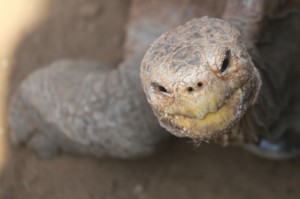
A Bartolome Sea Lion and a Tortoise at Galapaguera on San Cristobal:

Sea Lion Goes for a Swim on Bartolome Island and
a Nazca -Masked Boobies make noise on Espanola Island:
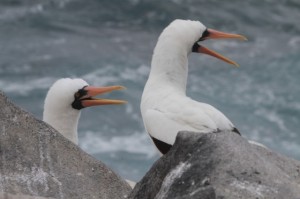
A Galapagos Hawk on Rabita Island and a Blue-Footed Boobie on
Espanola Island:

Renee Blodgett is the founder of We Blog the World. The site combines the magic of an online culture and travel magazine with a global blog network and has contributors from every continent in the world. Having lived in 10 countries and explored over 90, she is an avid traveler, and a lover, observer and participant in cultural diversity. She is also the founder of the Magdalene Collection, a jewelry line dedicated to women’s unsung voices and stories, and the award-winning author of the bestselling book Magdalene’s Journey
She is founder of Blue Soul Media and co-founder of Blue Soul Earth as well as the producer and host of the award-winning Blue Soul CHATS podcast, that bridges science, technology and spirituality. Renee also founded Magic Sauce Media, a new media services consultancy focused on viral marketing, social media, branding, events and PR. For over 20 years, she has helped companies from 12 countries get traction in the market. Known for her global and organic approach to product and corporate launches, Renee practices what she pitches and as an active user of social media, she helps clients navigate digital waters from around the world. Renee has been blogging for over 16 years and regularly writes on her personal blog Down the Avenue, Huffington Post, BlogHer, We Blog the World and other sites. She was ranked #12 Social Media Influencer by Forbes Magazine and is listed as a new media influencer and game changer on various sites and books on the new media revolution. In 2013, she was listed as the 6th most influential woman in social media by Forbes Magazine on a Top 20 List.
Her passion for art, storytelling and photography led to the launch of Magic Sauce Photography, which is a visual extension of her writing, the result of which has led to producing six photo books: Galapagos Islands, London, South Africa, Rome, Urbanization and Ecuador.
Renee is also the co-founder of Traveling Geeks, an initiative that brings entrepreneurs, thought leaders, bloggers, creators, curators and influencers to other countries to share and learn from peers, governments, corporations, and the general public in order to educate, share, evaluate, and promote innovative technologies.

